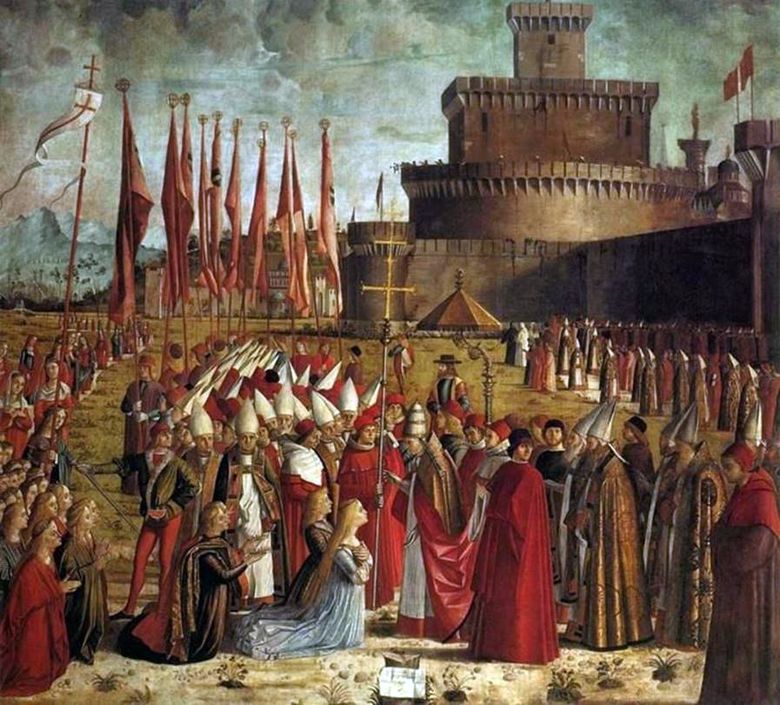
The largest canvas of the cycle of Saint Ursula reveals his potential customer. At the foot of the pillar-flagpole dividing the composition according to the principle of the golden section, a plate with the inscription “VICTORIS CARPATIO VENETIS, OPUS.” Is clearly visible. and the date, and in the center of the picture depicts a young blonde member of the “Campania della Calza” society. In his hands is a ribbon with a dedicatory inscription and letters that are deciphered as the initials of Niccolo Loredana.
What is happening in a fantastic city and a fictional landscape still bears the accent of the eternal Venetian festivity, the benefit of the plot was for that reason. The city was extremely concerned about the impression produced, and in the arsenal of its decoration “on occasion” carpets became the main means. Therefore, the portrayal of an important event in the life of a saint is extrapolated to contemporary artists by specific Venetian impressions, demonstrating the “truthful visibility” of a generation representative who is firmly attached to the real world.
Carpets can often be found in Venetian religious painting and even in portraits, where they carried a symbolic world-building function, hinting at bliss in the gardens of Eden. Of course, the decorative pattern of various carpets on the pattern, the refinement of elegant fabrics make a special note of festive solemnity in the composition and demonstrate Karpaccio’s mastery of the subtleties of color, his joyful admiration for life.
 Arrival of Saint Ursula and pilgrims to Cologne by Vittore Carpaccio
Arrival of Saint Ursula and pilgrims to Cologne by Vittore Carpaccio Meeting of Saint Ursula and pilgrims with the Roman Pope Kyriak by Vittore Carpaccio
Meeting of Saint Ursula and pilgrims with the Roman Pope Kyriak by Vittore Carpaccio Meeting pilgrims with Pope Kyriak by Vittore Carpaccio
Meeting pilgrims with Pope Kyriak by Vittore Carpaccio Miracle relics of the Holy Cross by Vittore Carpaccio
Miracle relics of the Holy Cross by Vittore Carpaccio Farewell to the parents by Vittorio Carpaccio
Farewell to the parents by Vittorio Carpaccio Les pèlerins rencontrent le pape Kiriak – Vittore Carpaccio
Les pèlerins rencontrent le pape Kiriak – Vittore Carpaccio The dream of Saint Ursula by Vittorio Carpaccio
The dream of Saint Ursula by Vittorio Carpaccio Madonna and Child by Vittore Carpaccio
Madonna and Child by Vittore Carpaccio